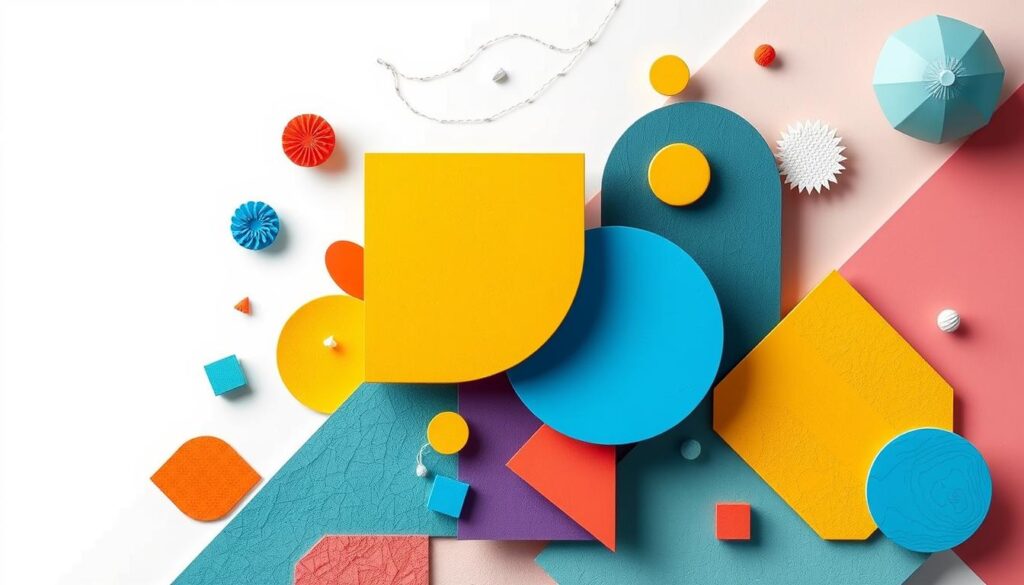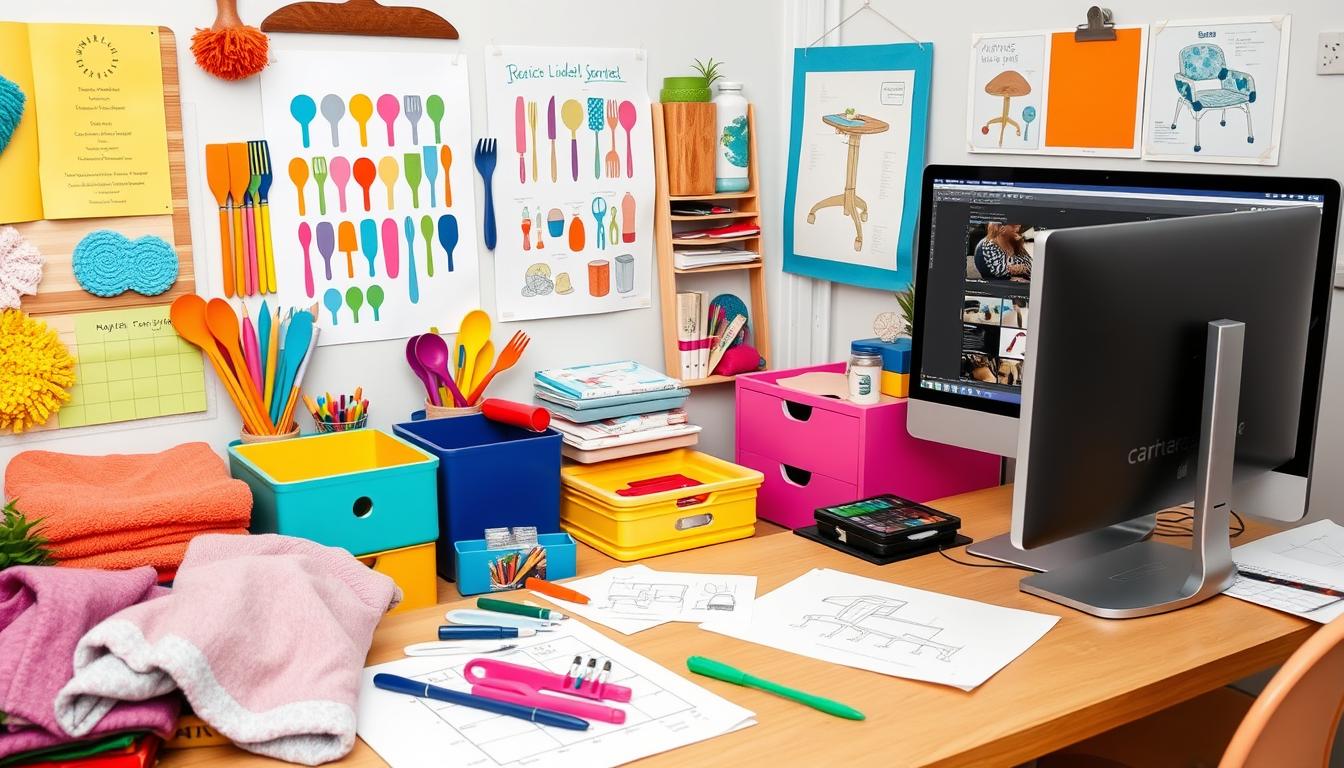Have you ever thought about how graphic design can change your work and brand? It’s key for photographers in today’s Australian market. By using graphic design, I can make my photography stand out and strengthen my brand. This guide will show you how combining these two can make your images clearer and more appealing.
Key Takeaways
- Graphic Design for Photographers enhances visual storytelling.
- Understanding design principles improves clarity and impact of images.
- A strong visual identity for photographers is essential for branding.
- Graphic design can set you apart in the competitive market.
- Integration of graphic design yields a cohesive photography brand.
Understanding Graphic Design Fundamentals
As a photographer, learning about graphic design can really help me show off my work. Knowing about colour theory, typography, and how to use space is key. These things make my photos look great and share my message clearly.
Core Principles of Graphic Design
Graphic design has basic ideas that every photographer should know to make their photos better. These ideas include:
- Contrast: This makes different parts stand out, focusing on what’s important.
- Repetition: Using the same styles or themes ties a design together.
- Alignment: Putting things in the right place makes them look neat and professional.
- Proximity: Putting things close together makes it easy to see how they connect.
Importance of Aesthetic Balance and Composition
Aesthetic balance and composition are key to telling a story with photos. They help me lead the viewer’s eye through the picture. This makes the photo look good and makes the viewer feel something.

Graphic Design for Photographers: Bridging the Gap
The link between photography and graphic design is strong. It helps me share ideas better and make stories that grab attention. By combining these two, I find new ways to be creative. Each field uses a special process to make great work.
How Photography and Graphic Design Complement Each Other
Photography and graphic design both use visuals to talk to people. When I add design ideas to my photos, it makes the story stronger. Things like layout and colour theory are key in design and photography. Using design in my photos makes them look better and more professional.
Similarities in Creative Processes
Photography and graphic design have similar steps in making something creative. First, I get inspired and then I research to focus my ideas. Next, I evaluate my choices to pick the best ones. Finally, I apply what I’ve learned to make something real, thinking about design to make it look good. This way, my work feels complete and connects with people.
The Role of Visual Identity in Photography Branding
Having a strong visual identity is key to a memorable photography brand. It’s all about a look and feel that ties together marketing, websites, and social media. By making a visual identity, I make a mark on potential clients. This helps me stand out in a crowded market.
Creating a Strong Photography Brand
Starting a photography brand means knowing what makes a visual identity strong. I look at things like colours, fonts, and the style of photos. These things make my brand feel connected to my audience. It’s important my brand shows who I am and what my photos are about.
- Define your target audience: Knowing who you want to attract helps with design choices.
- Choose a colour palette: Pick colours that make people feel the way you want them to and fit your style.
- Develop a logo: Make a logo that shows off your unique style of photography.
- Maintain consistency: Use the same design elements everywhere, from your website to business cards.
- Gather feedback: Show your ideas to others for helpful advice.
Tools for Building Your Visual Identity
There are many tools that help build a photography brand. Adobe Creative Suite is great for making materials that match my brand. Canva and Unsplash are easy to use and have lots of high-quality images. These tools make it easier for me to focus on taking amazing photos.
| Tool | Purpose | Benefits |
|---|---|---|
| Adobe Creative Suite | Design and editing | Top-notch tools for logos and graphics |
| Canva | Graphic design | Easy to use, with templates for different marketing needs |
| Unsplash | Stock photography | High-quality images for free that match my designs |
| Affinity Designer | Vector graphics | A budget-friendly option for professional design |
Leveraging Design Services for Photographers
As a photographer, I often find that hiring a professional designer can really help my business. Knowing when to use design services for photographers is key. Each project has its own challenges that can be solved with special graphic design solutions. This can make my visual branding better and help me stand out in the photography market.
When to Hire a Professional Designer
Finding the right times to hire a professional designer can make my branding better. Here are some key moments:
- Creating complex branding materials: When I need a unified design across different platforms.
- Launching a new website: A well-designed site makes it easier for users and shows off my work well.
- Developing promotional materials: Flyers, brochures, and social media graphics need expert skills to draw in my target audience.
Common Graphic Design Solutions for Photographers
Looking into common graphic design solutions helps me pick the best for my needs:
| Graphic Design Solution | Description | Benefits |
|---|---|---|
| Logo Design | A unique emblem that shows my brand. | Helps people recognize and see my professionalism. |
| Portfolio Website Design | An online place to show off my best work. | Makes me more visible and helps with my personal brand. |
| Marketing Collateral | Things like brochures, business cards, and more. | Boosts my marketing and gives clear contact info. |
Photography Logo Design: Making Your Mark
A strong logo is key for my photography brand. It’s like a visual signature. It must show my unique style and stand out in a busy market.
It should be simple and work for different people. This way, it shows my photography style well.
Essentials of Effective Logo Design
Creating a good photography logo involves several things:
- Memorability: It should be easy to remember.
- Relevance: It must match my photography type and style.
- Simplicity: Simple designs are more noticeable.
- Versatility: It should look good in all sizes and formats.
- Timelessness: A good logo lasts a long time without needing changes.
Examples of Successful Photography Logos
Looking at successful photography logos helps with inspiration. Here are some great examples:
| Photographer/Brand | Logo Features | Significance |
|---|---|---|
| Annie Leibovitz | Simple typeface, elegant use of negative space | Shows a timeless and professional look |
| Peter Hurley | Bold and modern design | Matches current trends and a lively style |
| National Geographic | Strong yellow rectangle, clear text | Very recognisable, means adventure and discovery |
Website Design for Photographers
Creating a great website for photographers is key to showing off my portfolio well. The right design draws in potential clients and lets me share my work in a way that shows my unique style. I use photography website best practices to make sure my site is engaging.
Best Practices for Photography Websites
When making my photography website, I focus on important things that make it work well and look good. Here are some main practices I follow:
- Fast loading times to stop visitors from getting annoyed.
- Mobile optimisation for easy access on any device.
- Simple navigation for easy looking through my portfolio.
- High-quality images that show my artistic vision.
- Clear contact info to get more inquiries.
Integrating Your Portfolio with Your Brand
It’s important to link my portfolio with my brand. This means showing my style and photography beliefs on all site pages. I make sure that:
- Colour schemes match my brand’s personality.
- Typography is easy to read and shows my artistic side.
- Logos and visual elements are used everywhere for a strong brand look.
By using these strategies, I make an online space that speaks to potential clients. It shows my photography in a way that’s memorable and professional.
Creating Effective Photography Marketing Materials
I’ve learned how important it is to have good photography marketing stuff. Things like brochures, business cards, and social media pictures help spread the word about what I do. They draw in new customers.
Design Principles for Marketing Collateral
For great marketing stuff, following key design rules is a must. These include:
- Clarity – Make sure what you say is easy to get.
- Hierarchy – Show what’s most important with visual hints.
- Relevance – Make sure it speaks to your audience’s likes and needs.
These ideas help make my marketing stuff stand out. They make sure it shares my brand’s value well.
Using Graphic Design in Social Media Marketing
Now, graphic design in social media is a big deal for getting people’s attention. By using bright visuals and consistent branding on social media, I make a mark online. Here are some tips I use:
- Keeping my brand the same on all platforms keeps people remembering me.
- Using themes or events in my posts keeps it fresh and timely.
- Getting people involved with polls and quizzes makes them more engaged.
For examples of how to do this, I look at this site. It shows how graphic design helps in photography.
| Principle | Description | Application |
|---|---|---|
| Clarity | Ensure messaging is succinct and clear. | Use bold headings and limited text in brochures. |
| Hierarchy | Visual arrangement that indicates importance. | Implement larger fonts for headlines and smaller for details. |
| Relevance | Tailor content to meet the audience’s interests. | Design promotional materials targeting specific events or seasons. |
Conclusion
As a photographer, using graphic design has changed how I show my work and talk to clients. It lets me make my photography stand out and connect better with people. This way, I’m not just taking pictures; I’m telling stories through design.
This article showed me how important design is for photographers. It made me see how photography and design work together. Now, I’m always looking for new ways to improve my work. From making eye-catching ads to building a strong brand, every little thing matters.
If you want to make your photography business better, there are many resources out there. Check out LongShot Studio for tips on how to do it. Using these ideas, I’m excited to share my art in a new way and make a mark in the industry.

